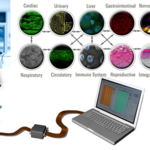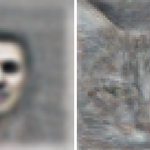Technology

A number of recent web-notables all seem to revolve (eccentrically) around the question of human evolution. Whether it continues. Whether there is such a thing as "selection in groups." Whether our technological (cyborg) augmentations and/or increasing numbers of "non-neuro-typical" society members portend a new splitting of human destiny. And it looks as if I should have set Existence just five years in the future, instead of 35!
For starters, see a short futuristic film by Eran May-raz and Daniel Lazo about the "game-ification" of everything. They reveal…

Crotchety old men seem to have won this argument.
Modern pop music is too loud and does sound all the same, just like angry old types have been saying for 70 years.
A team from Spain analyzed music from a 55 year period, using an archive known as the Million Song Dataset, and found that songs have indeed become both louder and more homogenized in terms of chords and melodies.
1955, the first year of their dataset, was the birth of rock and roll and saw the decline of the 'doo wop' chord progression (I-vi-IV-V). If you know your old songs, mentally compare "Earth Angel" by…

What exactly happens to your face when you smile spontaneously, and how does that affect how old you look? Computer scientists from the University of Amsterdam's Faculty of Science recorded the smiles of hundreds of visitors to the NEMO science centre in Amsterdam, creating the most comprehensive smile database ever.
The computer scientists behind the project say that you look younger when you smile - if you are over forty. If you are under forty, you should look neutral if you want to come across younger. And be cold and distant and act a little broken inside if you want to date a stripper.…

Parkinson’s disease is the second most common neurodegenerative disease after Alzheimer’s disease.
Now patients are getting some high-tech help. REMPARK (Personal Health Device for the Remote and Autonomous Management of Parkinson’s Disease) is a wearable monitoring and actuation system that identifies the motor status of Parkinson’s patients in real time. The system will also determine what phase a patient is in while walking or performing everyday activities and provide a cue to initiate movement when a gait-freezing episode occurs.
REMPARK’s overall objective is to identify and quantify…

Can modern physicists examine ancient myths and teach us about modern social networks, even science ones like Science 2.0?
Pesky humanities types are always butting into science and a new article in EPL (Europhysics Letters) turns the tables. Pádraig Mac Carron and Ralph Kenna from Coventry University performed detailed text analyses of the Iliad, Beowulf and the Táin Bó Cuailnge and found that the interactions between the characters in all three myths were consistent with those seen in real-life social networks. Taking this further, the researchers compared the myths to four known…

Defense Advanced Research Projects Agency (DARPA) and the National Institutes of Health (NIH) are teaming up to provide $32 million for development of a technology platform that will mimic human physiological systems in the laboratory, using an array of integrated, interchangeable engineered human tissue constructs - a human body on a chip.
The new program is called “Barrier-Immune-Organ: MIcrophysiology, Microenvironment Engineered TIssue Construct Systems” (BIO-MIMETICS) and includes the Department of Biological Engineering at MIT, the Charles Stark Draper Laboratory, MatTek Corp. and…

A team of academics from the University of Southampton thinks they will top the rest of the English Fantasy Football League when the new football season kicks off next month in England.
By football, we mean Soccer to Americans. Sorry if we confusingly used the term for the game that actually uses feet and lets people who use their feet in the Hall of Fame.
Ph.D. student Tim Matthews, along with visiting researcher George Chalkiadakis and Dr. Sarvapali Ramchurn, Lecturer in Computer Science, developed an artificial soccer manager that in their tests has ranked, on average, in the top one…

If the millions of people suffering who have Multiple Sclerosis or muscular dystrophy could have one wish, it probably wouldn't be that they could use play video games - but until cures can be found, using a computer might make it a little better. costs less than £40.
Created from off-the-shelf materials, the new GT3D device costs around $50 and can work out exactly where a person is looking by tracking their eye movements, allowing them to control a cursor on a screen just like a normal computer mouse. GT3D comprises an eye-tracking device and "smart" software. Researchers…

Issues of “mind uploading” and “machine intelligence” have been in the tech. news of the futurist variety lately which got me thinking about these concepts and led me to write this blog post on the topic. The first version of which was a bit of a “tongue in cheek” attempt which my partner said read like it was done by an“evil” genius.
So this is a revised post to clarify some misunderstandings based on the feedback I have received and also to clarify my own position.
There are basically two camps in the debate on “mind uploading” and “machine intelligence”. The first consists of…

Are we on the road to uploading our brains to computers and living forever?
Singularity proponents require a two-pronged approach to believing so; wildly overstating the technology curve of what future computers and programmers will accomplish and wildly understating the complexity of the human brain. If you believe strongly enough, the future looks bright for an eternal...future.
But between the reality of what neuroscientists know (and don't even know they don't know yet) and the vision of Ray Kurzweil lies a giant chasm: A two-year old can look at a cartoon picture of a cat and…